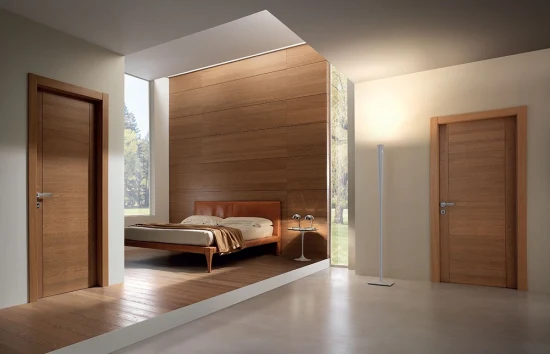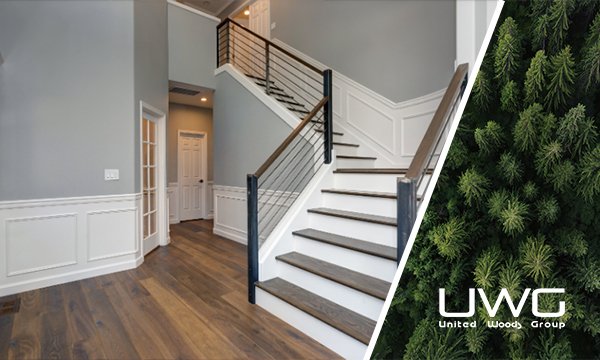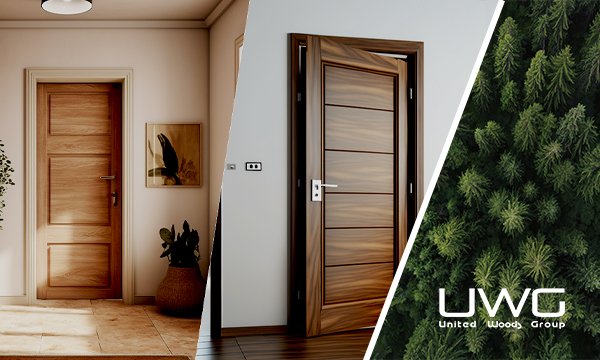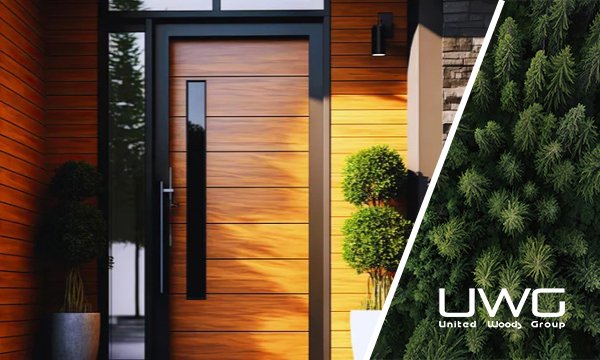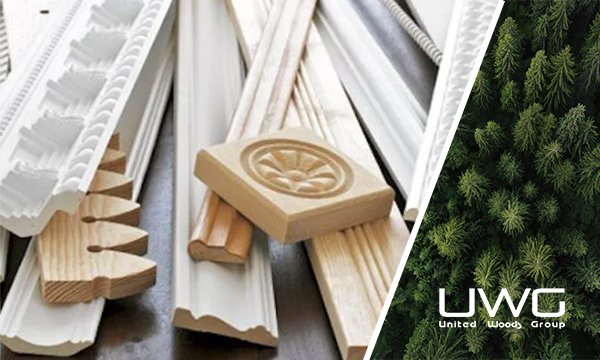In recent years, veneer doors have become very popular in the market, so I often receive questions from builders about what veneer doors are?
A veneer door is a type of door that has a thin layer of high-quality wood veneer adhered to a core material such as plywood, MDF (Medium-Density Fiberboard), or particleboard. This construction provides the look and feel of solid wood at a lower cost.veneer doors provide an attractive and practical alternative to solid wood doors, combining the beauty of natural wood with the advantages of engineered materials. Their afford-ability, durability, and design versatility make them a popular choice for a wide range of applications.
If you still don’t know much about veneer door, don’t worry,This comprehensive article delves into the intricacies of veneer doors, exploring their composition, manufacturing process, advantages, applications, maintenance, and overall impact on the market. By the end, you will have a thorough understanding of what makes veneer doors a preferred choice for many builders, homeowners, and designers.
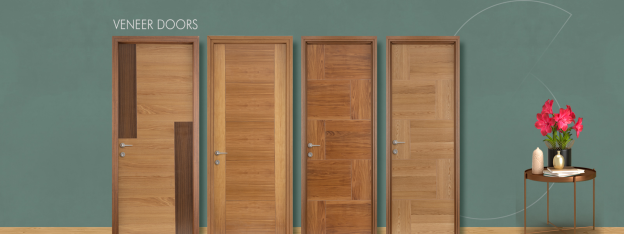
Composition and Manufacturing
Veneer doors are crafted by adhering thin layers of natural wood veneer to a core made from various materials. The core materials typically used include solid wood, plywood, and MDF (Medium-Density Fiberboard). Let’s examine each component in detail:
Core Material
Solid Wood
Solid Wood cores provide exceptional strength and durability. This type of core is often preferred for high-traffic areas where the door needs to withstand significant wear and tear. However, solid wood cores can be more expensive and are heavier than other options.
Plywood
Plywood cores offer a good balance of strength and stability. Plywood is made by gluing together multiple thin layers of wood veneer at alternating angles, which gives it excellent resistance to warping and splitting. Plywood cores are a popular choice for veneer doors because they provide durability while being more cost-effective than solid wood.
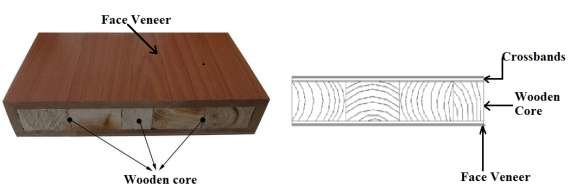
MDF (Medium-Density Fiberboard):
MDF cores are made from wood fibers that are bonded together with resin under high pressure and heat. MDF provides a smooth and uniform surface, making it ideal for applying veneer. It is also more affordable and less prone to warping compared to solid wood.
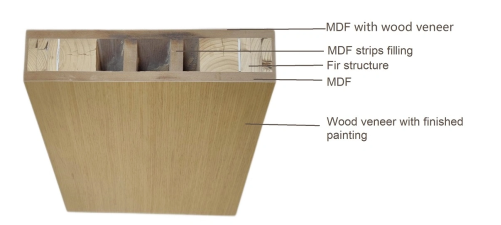
veneer material
Reconstituted Veneer:
- Definition and Composition: Reconstituted Veneer,is an engineered wood product created from fast-growing plantation timber. The wood is processed to remove natural imperfections and then dyed and reassembled to mimic the appearance of more expensive and exotic wood species.
- Advantages: This type of veneer is eco-friendly, as it uses sustainable timber and reduces the reliance on natural forests. It offers a consistent grain and color, making it ideal for large-scale projects where uniformity is crucial. Additionally, reconstituted veneer is less prone to warping and cracking compared to natural wood veneer.
- Applications: Reconstituted Veneer is commonly used in high-end furniture, cabinetry, and interior doors, offering a cost-effective alternative to rare wood species while maintaining a luxurious appearance.

The veneer layer is the defining feature of a veneer door. Veneers are thin slices of natural wood that are cut from logs using a variety of techniques, including rotary cutting, slicing, and peeling. The choice of wood species for the veneer can vary widely, including popular options such as oak, maple, cherry, walnut, and mahogany. The veneer slices are meticulously matched and arranged to create consistent grain patterns and a visually appealing surface.
Melamine Veneer:
- Definition and Composition: melamine veneer, consists of a decorative paper layer impregnated with melamine resin and bonded to a core material such as MDF or particleboard. The melamine layer provides a durable and scratch-resistant surface.
- Advantages: Melamine veneer doors are highly durable, resistant to moisture, stains, and scratches, making them ideal for high-traffic areas and environments where cleanliness is paramount. They are available in a wide range of colors, patterns, and textures, including realistic wood grain finishes.
- Applications: These doors are often used in kitchens, bathrooms, and commercial settings where durability and easy maintenance are critical. They offer a cost-effective alternative to solid wood doors while providing a similar appearance and feel.

Advantages of Veneer Doors
Veneer doors offer numerous advantages that make them a popular choice for a wide range of applications. These benefits include aesthetic appeal, cost-effectiveness, sustainability, stability, and customization options.
Aesthetic Appeal:
Veneer doors provide the beauty of natural wood with a variety of grain patterns and colors. This allows for a high-end appearance that can enhance the overall look of any space. The natural wood veneer gives each door a unique character, with subtle variations in grain and color that add to its charm. Additionally, veneer doors can be finished to match existing woodwork or to create a specific design theme.
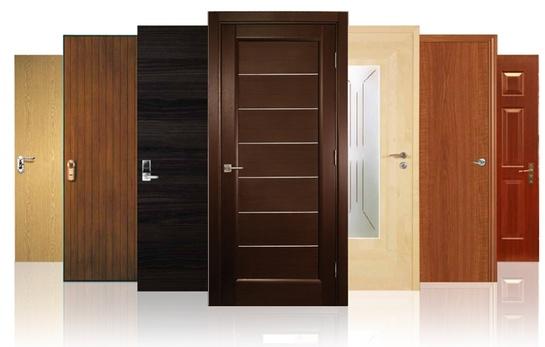
Cost-Effectiveness:
Veneer doors offer the appearance of solid wood doors at a fraction of the cost. This makes them an affordable option for homeowners and builders who want the look of natural wood without the high price tag. The use of engineered core materials, such as plywood or MDF, reduces manufacturing costs while still providing a durable and attractive product.
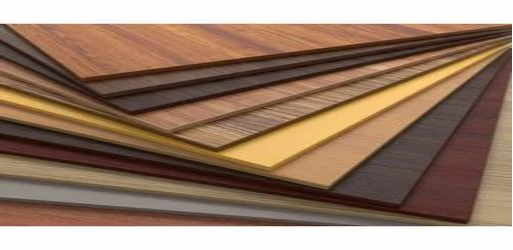
Sustainability:
Utilizing veneer maximizes the use of wood resources, as thin slices of wood are used instead of large solid wood panels. This makes veneer doors a more sustainable option, as they require less raw material. Additionally, many manufacturers source their wood veneers from sustainably managed forests, further reducing the environmental impact.
Stability:
Veneer doors are less prone to warping, cracking, or splitting compared to solid wood doors. This is especially true when the core is made from stable materials like plywood or MDF, which provide a strong foundation for the veneer. The stability of veneer doors makes them suitable for a variety of environments, including areas with fluctuating humidity and temperature levels.
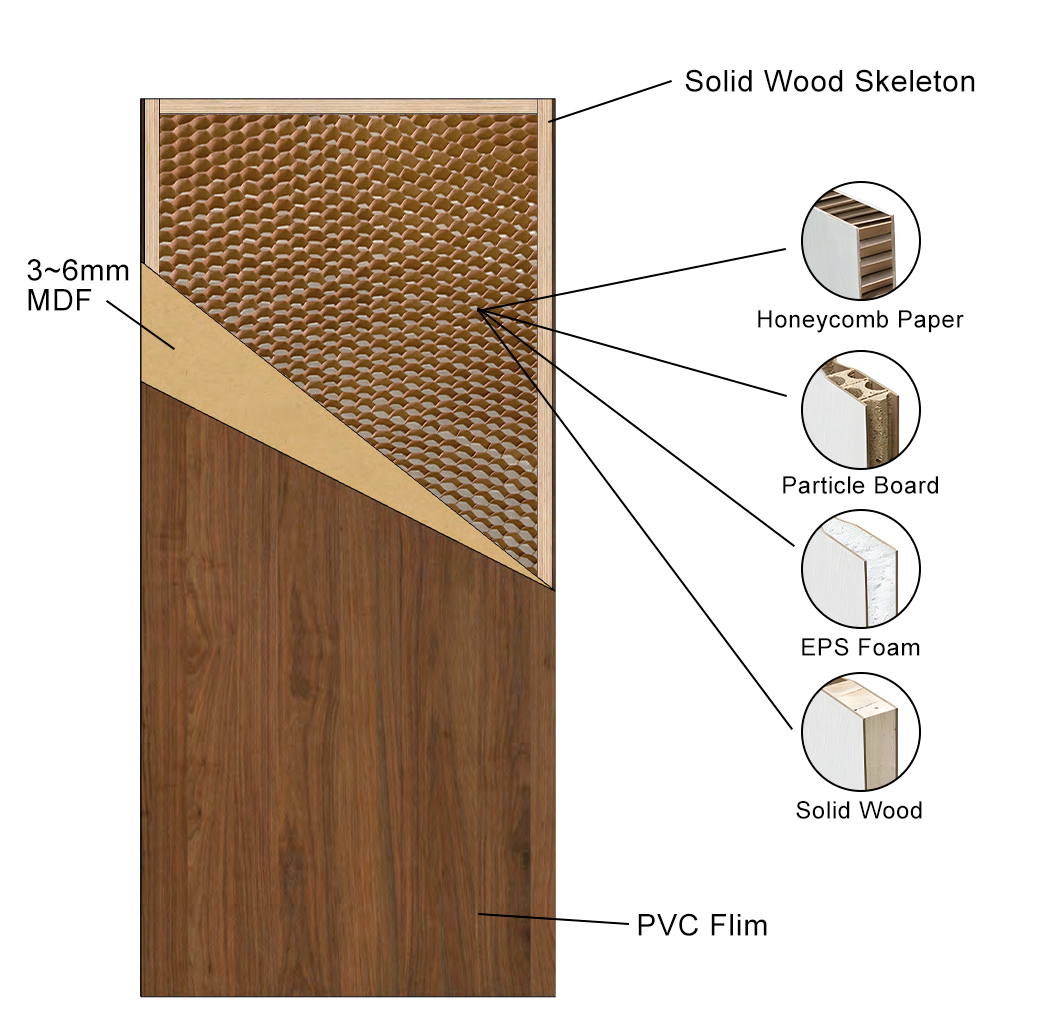
Customization:
Veneer doors can be customized with different veneer types and finishes to suit various interior design preferences. Homeowners and designers can choose from a wide range of wood species, stains, and finishes to create a look that complements their decor. Additionally, veneer doors can be made in various sizes and styles, including traditional, contemporary, and rustic designs.
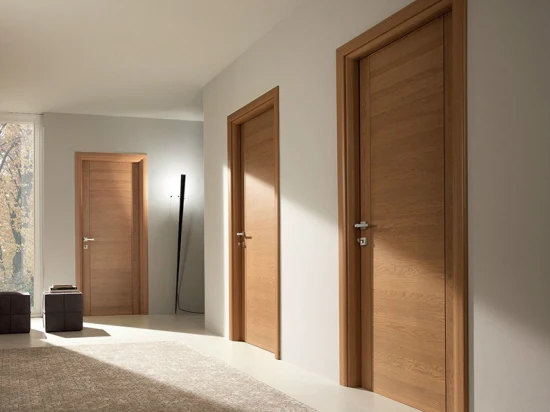
Applications of Veneer Doors
Veneer doors are versatile and can be used in a wide range of residential and commercial applications. Their aesthetic appeal, durability, and customization options make them suitable for various settings.Veneer doors are commonly used in homes for interior doors, including bedroom, bathroom, and closet doors. They provide a stylish and cohesive look that enhances the overall aesthetic of the home. Homeowners can choose veneer doors that match their furniture, flooring, and cabinetry, creating a harmonious design throughout the space.
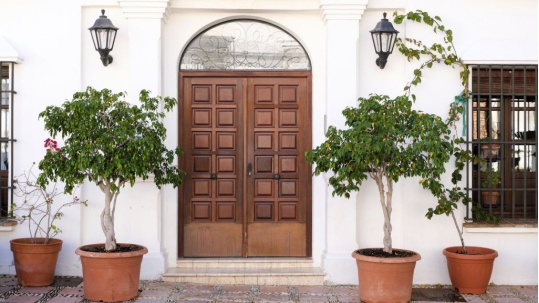
Commercial Use:
Veneer doors are also suitable for office buildings, hotels, and other commercial spaces where both aesthetics and durability are important. In commercial settings, veneer doors can be used for office doors, conference rooms, hotel room doors, and more. The ability to customize the veneer and finish allows businesses to create a professional and inviting environment for employees and clients.
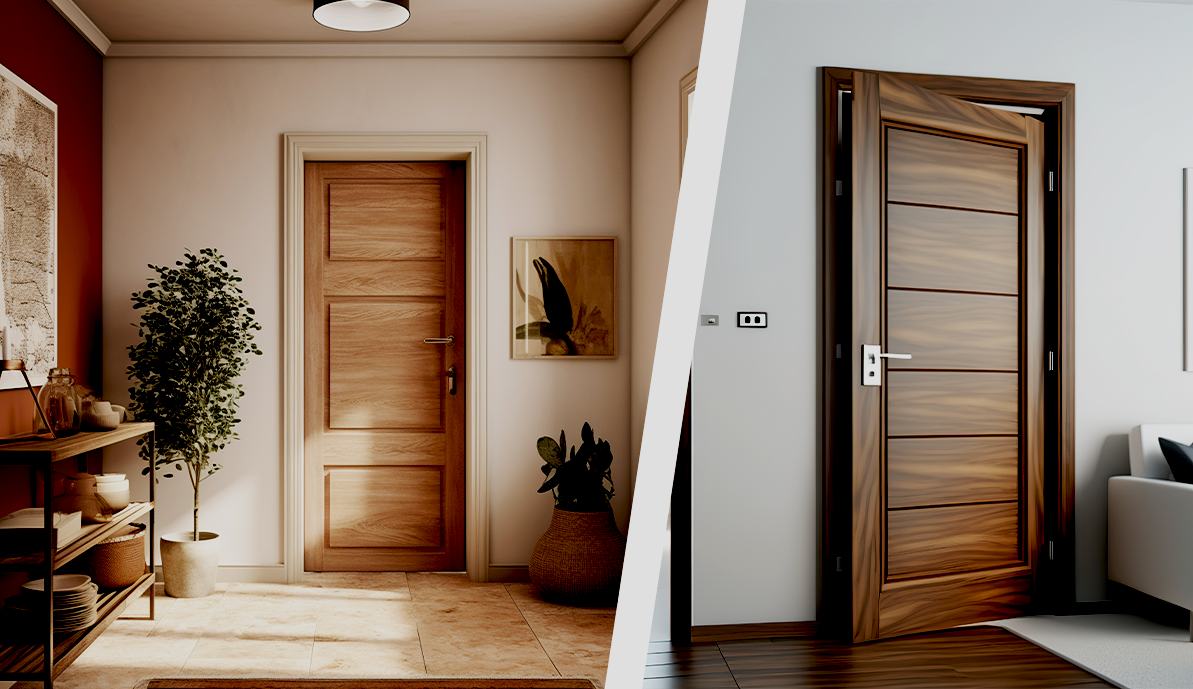
Maintenance and Care
Proper maintenance and care are essential to preserve the appearance and longevity of veneer doors. Here are some tips for keeping veneer doors in excellent condition: Regular dusting and occasional cleaning with a damp cloth are usually sufficient to keep veneer doors looking their best. Use a soft, lint-free cloth to avoid scratching the surface. Avoid using harsh chemicals or abrasive cleaners that could damage the veneer. If necessary, use a mild soap solution to remove stubborn dirt or stains, followed by wiping with a clean, damp cloth. Small scratches or dents in the veneer can often be repaired with wood fillers or touch-up kits designed for veneer. For minor scratches, use a touch-up marker or wax stick in a matching color to fill in the damaged area. For larger dents or gouges, apply a wood filler that matches the veneer color, sand it smooth once dry, and then apply a matching finish. If the damage is extensive, consider consulting a professional for repairs.
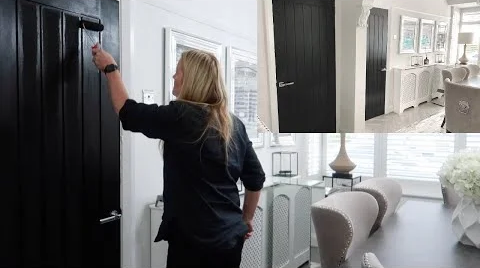
Conclusion
Veneer doors are a remarkable combination of natural beauty and engineered practicality. They provide the aesthetic appeal of solid wood doors while offering cost savings, sustainability, stability, and customization options. Whether used in residential or commercial settings, veneer doors enhance the overall design and functionality of any space.
Their versatility allows them to be tailored to various design preferences, making them an ideal choice for homeowners, builders, and designers. With proper maintenance and care, veneer doors can retain their beauty and functionality for years to come, making them a wise investment for any project.
